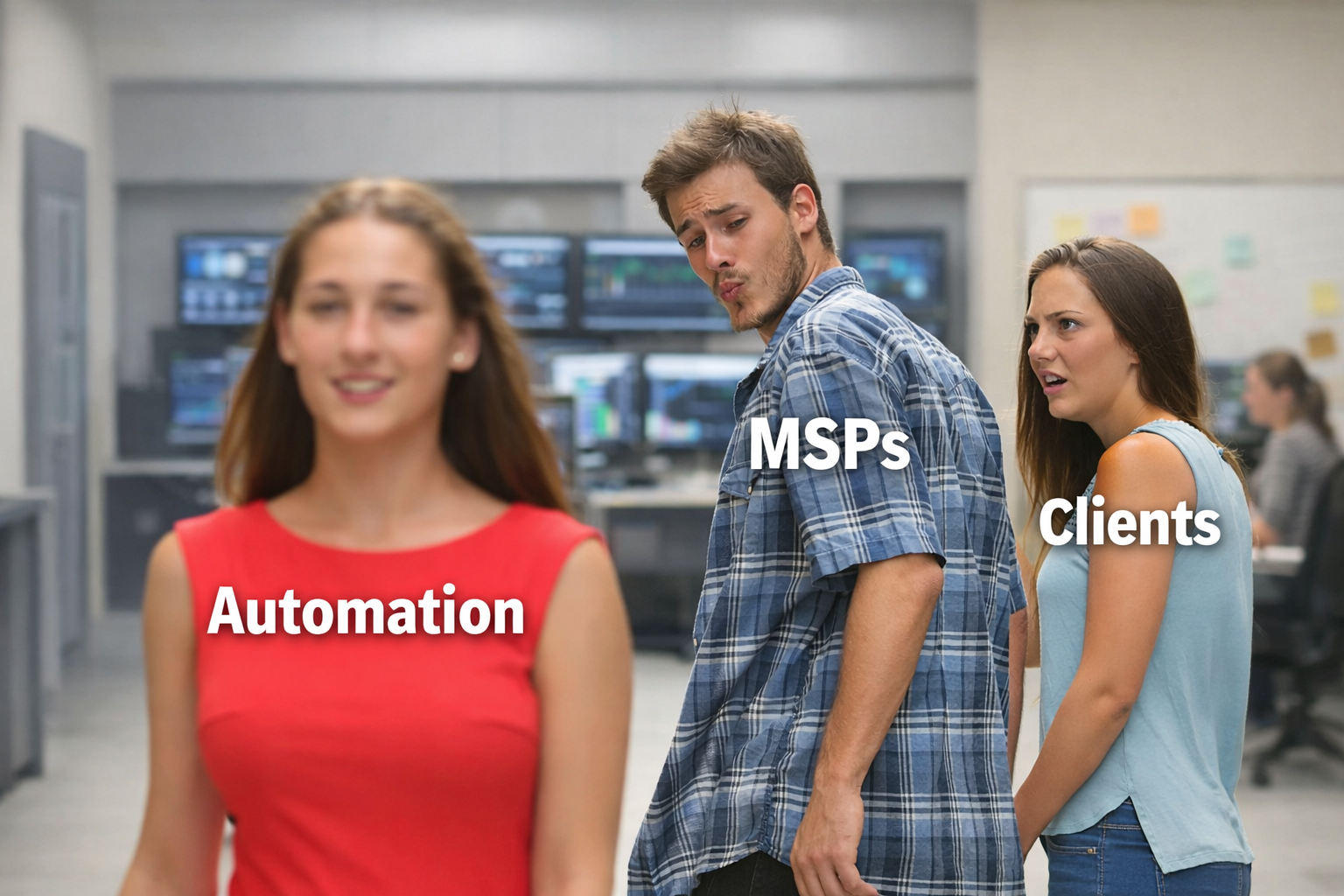Boards and owners want proof you can prioritize real risk and undo bad outcomes quickly. Define and report hard metrics like time to detect, time to tenant-wide message removal, and time to patch known-exploited vulnerabilities. Pre-stage authority for high-impact actions (message recall, account disable, session revoke), document who can approve them after hours, and test the path in quarterly tabletops so execution is frictionless when minutes matter.
Table of Contents
Revisiting my peer's May 2025 Dark Reading article, Audian Paxson warned that cuts to CISA would weaken the public-private connective tissue, leading to slower advisories, fewer briefings, fragmented standards, and reduced information sharing, with smaller organizations (SMBs) hit hardest.
Unfortunately, we are now seeing this play out. Capacity is lower, federal touchpoints are fewer, and SMBs are relying more on vendor Product Security Incident Response Teams (PSIRTs), national Computer Emergency Response Team (CERTs), and their own telemetry.
According to Canalys, roughly 90,000 MSPs operate worldwide in 2025. That abundance gives SMBs plenty of choice and sharpens competition for providers—so buyers now expect clear outcomes with baseline security built into the service, not tacked on later.
Meanwhile, multiple outlets report that the October 2025 funding lapse left about 889 of CISA’s 2,540 personnel working, tightening the agency’s capacity for outreach, briefings, and cross-sector coordination. For SMBs and MSPs, that means fewer federal touchpoints and a greater reliance on parallel sources and their own telemetry to guide patching and incident response while capacity is constrained.
That’s the 2025 through-line: SMBs need more help than ever, MSPs remain the right model, but the public-sector safety net is stretched. The practical questions now are what changes when CISA’s megaphone gets quieter—and how MSPs can build Secure-by-Design programs that don’t depend on a steady drumbeat from Washington.
Here is what has changed and how to respond.
The Ripple Effect For SMBs and MSPs
- Slower signal, same noise.
When federal advisories slow, attackers do not; phishing, BEC, and exploit activity continue at the same pace. Treat vendor PSIRTs and national CERTs as primary triggers, and anchor patching to known-exploited status with preapproved SLAs. Stand up a weekly risk stand-up and a one-page exec brief so decisions keep moving even when external guidance is thin. - More fragmentation.
Signal now arrives from many places—PSIRTs, CERTs, Information Sharing and Analysis Centers (ISACs), researcher blogs, and your own telemetry—and it will not always agree. Centralize intake into one system of record, tag items by product, severity, and “exploited in the wild,” and require a simple two-source rule before emergency change. Publish a short cadence: daily triage for critical items, weekly digest for leaders, and monthly control changes mapped to MITRE ATT&CK. - Higher expectations.
Where to Pull Signal When CISA is Quiet
According to platform advisories and PSIRTs, official vendor guidance remains the highest-signal trigger for safe change; pair it with national cyber centers (e.g., UK NCSC, CERT-EU, ACSC) for clear mitigations and a cross-check on urgency. Add ISACs and vetted professional communities for sector-specific TTPs and practical fixes, and keep independent research and journalism in the mix to help you brief non-technical leaders in plain language.
According to open frameworks and machine-readable sources, MITRE ATT&CK, CIS/NIST guidance, and known-exploited vulnerability lists are your best scaffolding for decisions you can automate and measure. Your most honest signal is still your own environment—authentication logs, EDR detections, email reports, and help desk tickets that smell like BEC or account takeover—so route them to one place and close the loop on every verdict.
Secure-by-Design in 3 Key Points
I know I’m oversimplifying—bear with me; the core pieces are here and plenty to pressure-test your current SMB process.
- Start with business moments, then lock down identity.
Map how money moves (invoices, payroll, vendor changes) and who can approve what; this shows where attackers aim first. Standardize strong auth and least privilege—phishing-resistant MFA for admins/VIPs, just-in-time access, conditional access, and monitored break-glass accounts. - Engineer for the after-delivery reality in email and collaboration.
Add post-delivery controls that rescan links/files, remove look-alikes across all inboxes, and require auditable approvals for tenant-wide actions. Give users a clear report button; send edge cases to analysts and feed every final verdict back into rules so noise drops over time. - Run operations based on exploited-in-the-wild status and procure for secure defaults.
Tie patch/mitigation SLAs to known-exploited status and keep a pre-approved crisis template so business owners know impact and timelines. Bake Secure-by-Design requirements into SOWs (secure defaults, SBOM, telemetry, disclosure policy) and track monthly outcomes like time-to-remediation and false-positive reduction.
A 30-day SMB Rollout Plan for any MSP
Week 1: Orient & baseline
- Interview AP/Finance, executive support, and HR on real workflows; list who can move money and approve changes.
- Verify SPF/DKIM on all domains; enable DMARC reporting and schedule a monthly review.
Week 2: After-delivery muscle & escalation
- Turn on message rescan/removal workflows; document who can approve tenant-wide actions and after-hours escalations.
- Publish a plain-English policy: “If it’s known-exploited, remediation begins within X days; now if active in our sector.”
Week 3: Procurement guardrails
- Add Secure-by-Design clauses to SOWs (secure defaults, SBOM, telemetry access, vulnerability-disclosure process).
- Capture vendor PSIRT links and escalation contacts in your PSA/CMDB.
Week 4: Drill & measure
- Run a 45-minute BEC tabletop with Finance/AP; include a wire-stop drill.
- Report four numbers: domain posture, identity posture, patch-SLA adherence, mean time to removal for bad emails.
Five Questions SMB Leaders Should Ask Their MSP Today
- How do you decide what gets patched first—do you prioritize known-exploited vulnerabilities over CVSS alone?
- If a malicious email is discovered after delivery, how fast can you remove similar messages across all inboxes—and who is authorized to do it?
- Which Secure-by-Design criteria are in our vendor contracts (secure defaults, SBOM, telemetry, disclosure policy)?
- Which users are most targeted here, and what extra controls and drills do we run for them?
- How do our detections improve every month—what human feedback loops and metrics (e.g., time-to-remediation) do you track?
Big Picture
When CISA’s voice softens, process matters more. SMBs still need a partner who tells a clear story: here’s how attackers actually get paid, here’s what we’ve already set as the default, and here’s how we’ll prove we’re getting faster. MSPs that lean into Secure-by-Design—built on business moments, post-delivery reality, and simple, published SLAs—give SMBs confidence that doesn’t depend on the news cycle.
Explore More Articles
Say goodbye to Phishing, BEC, and QR code attacks. Our Adaptive AI automatically learns and evolves to keep your employees safe from email attacks.

/Concentrix%20Case%20Study.webp?width=568&height=326&name=Concentrix%20Case%20Study.webp)











.webp?width=100&height=100&name=PXL_20220517_081122781%20(1).webp)


